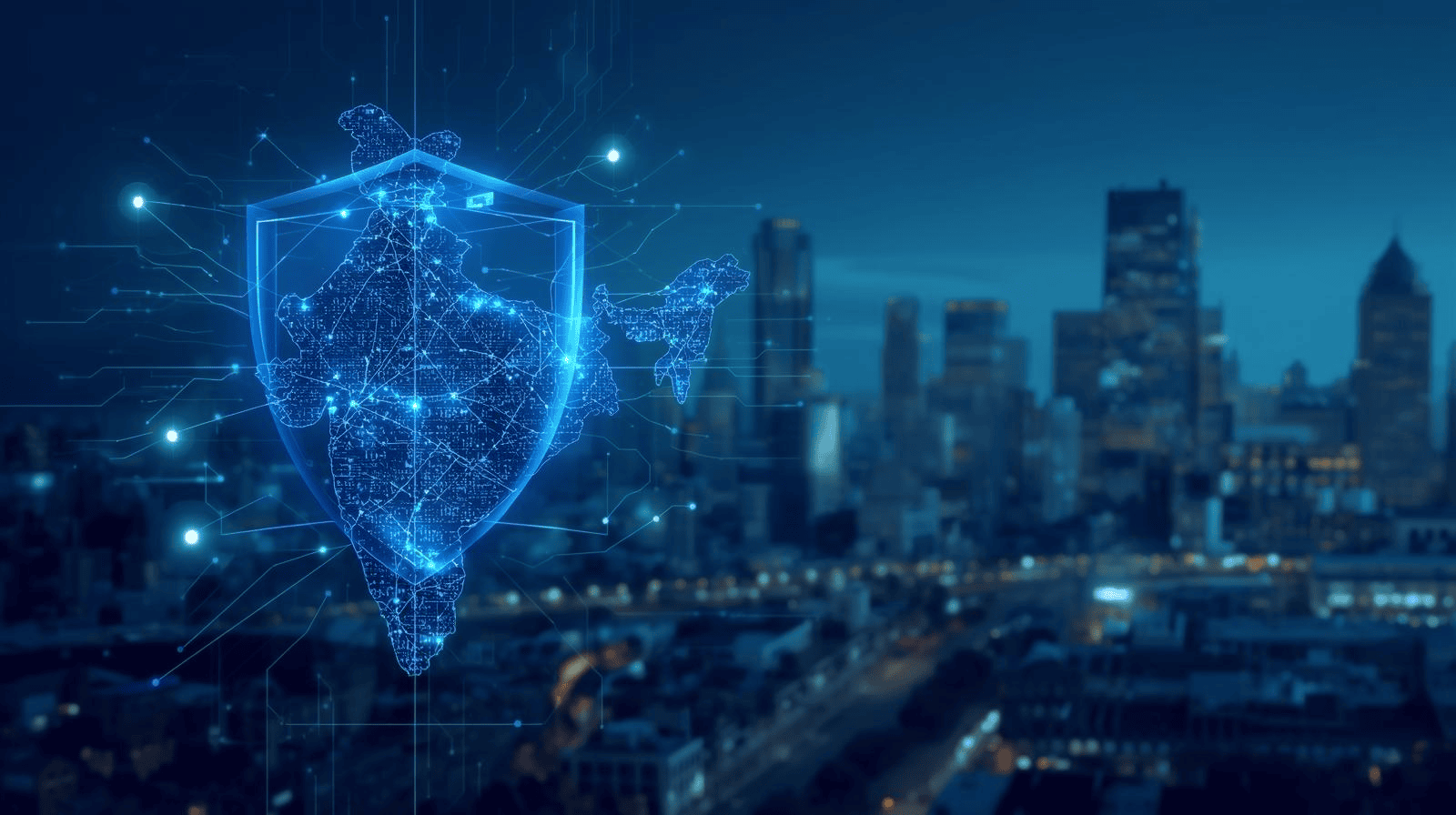In India’s fast-evolving business landscape, the convergence of regulatory complexity, digital disruption and heightened cyber-threats means we cannot afford to treat compliance, risk management and cyber-security as separate silos. Instead, we must view them as intertwined imperatives that together support organisational resilience and trust.
In this article we explore how we, as business leaders, IT professionals and stakeholders, can build and sustain robust frameworks around three key pillars:
Compliance & Risk Management
Managed IT Security Services
- Cyber Awareness
Let’s walk through the why, the how, and the actionable steps we must take in the Indian context to stay ahead.

Understanding Compliance and Risk Management in the Indian Context
Compliance and risk management are sometimes used interchangeably — but important distinctions matter for us. According to one authoritative source, compliance is the process of ensuring an organisation is adhering to all relevant laws and regulations, as well as internal policies and procedures.GEP+1 Risk management, by contrast, is broader: it involves identifying, assessing, and mitigating any event or condition that could impact the organisation’s ability to achieve its objectives.
For us in India, the terrain is unique. Our regulatory landscape includes multiple overlapping statutes and evolving norms, which make compliance not just a legal exercise but a strategic one:
The Indian regulatory framework for cybersecurity, data protection, and operational risk is evolving rapidly.
Compliance risk — the risk of fines, losses, or reputational damage because of non-adherence — is a key driver.
And many Indian organisations adopt risk management frameworks primarily to meet compliance obligations rather than to build competitive strength.
Thus, we must see compliance and risk management not as a checkbox, but as a strategic enabler for growth, innovation, and trust.
Why Compliance & Risk Management Matter for Our Business
Why should we invest time, effort and budget into this? Here are key motivations:
Avoiding financial and regulatory penalties: Non-compliance can lead to heavy fines, legal action, business interruption. The guide to compliance risk management makes this clear.
Protecting reputation and stakeholder trust: Clients, investors, employees expect organisations to act ethically, responsibly and securely.
Supporting strategic decision-making: Riskmanagement frameworks help us anticipate threats, evaluate opportunities and allocate resources with discipline.
Enabling digital transformation with resilience: As we invest in cloud, AI, IoT and other digital enablers, the risk and compliance dimension grows. For example, one Indian survey shows 84% of organisations believe digital transformation drives cybersecurity investment. Data Security Council of India (DSCI)
Hence, compliance and risk management are foundational rather than optional.
Key Components of Effective Compliance & Risk Management
In our view, an effective programme should include the following components:
Inventory and identification of applicable laws, standards, and internal policies: We must know what applies—whether it’s data protection, industry-specific regulation, IT-security standards, or internal governance rules.
Risk assessment and mapping: Identify where the organisation is vulnerable—regulatory, operational, cyber, third-party, reputational.
Controls design and implementation: Once risks are assessed, design controls (technical, process, human) to mitigate them.
Monitoring and review: Risk is dynamic; we must continually monitor controls, review the risk profile, and ensure continuous improvement.
Governance and oversight: Ensuring that the board, senior leadership, and oversight functions are aligned and accountable.
Culture, awareness, and training: Because even the best processes fail if people don’t understand and follow them.
With these in place, we are better positioned to integrate risk and compliance into day-to-day operations.

The Role of Managed IT Security Services in Our Strategy
In today’s environment, many organisations now rely on managed IT security services to support their security posture, especially when internal resources are constrained or when specialised expertise is required.
Here’s why managed services are valuable for us in India:
They provide expertise and scale: Security threats are complex; staying on top of them requires continuous monitoring, threat intelligence, and technical knowledge.
They help optimise cost-effectively: Rather than building everything in-house, managed services allow us to leverage external capabilities.
They support 24×7 operations, incident response, and proactive monitoring—capabilities which many organisations struggle with.
They enable alignment with compliance requirements: For example, security services can provide audit logs, reporting, and controls that support regulatory needs.
Recent global data indicates that organisations are increasingly shifting to such managed service providers (MSPs) for cybersecurity functions.
For Indian organisations, leveraging managed IT security services is often a pragmatic way to elevate our maturity level more rapidly.
Choosing the Right Managed IT Security Services Provider
When we decide to partner with a managed IT security services provider, we should evaluate key criteria:
Domain expertise and certifications: Do they have experience in our industry, and can they demonstrate security credentials (ISO 27001, SOC2, MDR, etc.)?
Service scope: Does the service cover monitoring, incident detection, response, vulnerability management, compliance support, and reporting?
Integration with our risk and compliance frameworks: They should not operate in isolation; their service must be aligned with our governance, risk, and compliance (GRC) efforts.
Scalability and flexibility: As our business and threat landscape evolve, the provider should adapt.
Transparency and metrics: They must provide clear SLAs, reporting, dashboards, and measurable outcomes.
Local-context knowledge: For India, understanding local regulatory requirements, threat landscape, and data sovereignty issues is critical.
By selecting a provider with these capabilities, we ensure the managed services become an enabler, not just a vendor.
Cyber Awareness: The Human Dimension
While technology, policy, and controls are essential, one of the most critical risk vectors remains people. Simply put: if our people are unaware or negligent, the best security architecture can be thwarted.
Consider some Indian context:
A survey found that nearly 64% of organisations in India believe their employees lack fundamental cybersecurity knowledge.
Studies show that among Indian students, cybersecurity awareness is incomplete—even among rural users and higher-education students.
India recorded over 369 million malware detections in about 8.4 million endpoints, averaging 702 detections per minute.
These statistics underscore that cyber awareness is not optional; it is a cornerstone of our defence.

Embedding Cyber Awareness in Our Organisation
We advocate for a structured approach to building cyber awareness:
Leadership endorsement: Senior leadership must champion cybersecurity culture and awareness programs; without visible support, programmes flounder.
Tailored training: Many awareness programmes fail because they are generic. Our training must be role-specific (executives vs. developers vs. operations vs. front-office).
Regular and engaging content: Monthly or quarterly campaigns with interactive modules, real-world scenarios, and simulations increase retention. Research shows this matters.
Phishing simulations and incident drills: Testing helps embed behaviour.
Measurement and metrics: Track awareness levels, reduction in risky behaviours, and incident rates linked to human error.
Continuous refresh: Threats evolve; awareness must refresh and remain relevant.
By making cyber awareness continuous and integrated into our culture, we reduce the human-risk component considerably.
Integrating All Three Pillars: A Unified Approach
For our organisation, the full power lies in integrating compliance & risk management, managed IT security services, and cyber awareness into a unified ecosystem rather than treating each separately.
Here’s how we can map that integration:
Risk & compliance framework identifies compliance requirements, risk exposures (including cyber risk), controls, and oversight mechanisms.
Managed IT security services deliver the technical controls, monitoring, incident response, and support required by the framework.
Cyber awareness initiatives ensure that the human aspect of our defence aligns with the controls and policies defined in the framework and implemented via the managed services provider.
This integrated model ensures we’re not only compliant, but resilient, agile, and secure.
Key Challenges in Implementation — And How We Overcame Them
Of course, there are real-world challenges we must navigate in India:
Resource constraints: Many organisations lack internal cybersecurity specialists. Using managed services and training programmes helps bridge that gap.
Rapidly evolving regulatory landscape: With the regulatory environment in India changing, staying ahead is hard. We must build adaptability into our framework.
Legacy systems and technical debt: Older infrastructure often lacks built-in security and is difficult to monitor. Prioritising remediation via risk assessments is key.
Organisational culture: Often, compliance is seen as a tick-box or the responsibility of just IT. We must build a culture wherein everyone owns cyber and regulatory risk.
Third-party and supply-chain risk: Our partners, vendors, and service providers may pose risks that our managed services and risk framework must cover.
Threat-sophistication: Cyber-attacks in India are growing in speed and complexity. For example, India detected over 369 million malware events, and the threat picture is shifting fast.
We overcome these by being proactive, investing in capability building, selecting the right partners, and fostering a culture of continuous vigilance.

Action Plan: Steps We Should Take Right Now
Here is a recommended action plan for our organisation to elevate our posture across the three pillars.
Conduct a baseline assessment
Map compliance obligations, regulatory commitments, internal policies.
Perform a risk assessment (cyber, operational, regulatory, third-party).
Review current human awareness levels via survey or simulation.
Define governance and ownership
Assign board-level oversight of cyber, risk and compliance.
Set up a cross-functional committee (IT, Legal, Risk, HR, Operations).
Appoint a head or champion for managed security services and cyber awareness.
Select or benchmark managed IT security services provider
Create requirements aligned with risk framework.
Evaluate providers based on expertise, integration, reporting, scalability.
Define SLAs, dashboards, maturity-indicators, and alignment with compliance needs.
Develop cyber awareness programme
Design role-specific training, monthly/quarterly campaigns.
Introduce real-world scenarios, phishing simulation, incident drills.
Build measurement metrics: training completion rates, reduction in incidents linked to human error, behaviour change.
Implement controls, monitoring and review
Ensure managed service implements technical controls (IDS/IPS, endpoint security, log management, incident response).
Monitor compliance with controls, review risk profile periodically.
Adjust and iterate program as threats evolve.
Communicate and reinforce culture
Leadership town-halls on cyber risk.
Internal communications, newsletters, posters, gamified modules.
Acknowledge and reward good behaviour.
Continuous improvement
Review metrics, audit results, incident reports.
Adjust awareness content, refine risk assessment, upgrade technology stack.
Benchmark against industry peers and stay informed of regulatory and threat shifts.
By following this roadmap, we position ourselves to not only comply but to thrive in the digital age.
Measuring Success — Metrics We Should Track
To ensure our initiatives are delivering value, we should define and track key metrics:
Number of compliance exceptions or breach incidents per quarter
Number and severity of control failures or audit issues
Incident detection and response time (managed service KPI)
Percentage of staff completing awareness training and phishing simulation scores
Percentage of security incidents linked to human error
Third-party vendor risk incident count
Cyber-security budget vs. number of incidents/threats handled
Employee survey scores around cyber risk awareness and culture
If these metrics trend in the right direction, we’ll know our integrated approach is working.
Why This Matters for Indian Organisations Specifically
Since our target country is India, let’s emphasise some of the local dimensions:
India’s cybersecurity market is growing rapidly: it generated USD 6,870.9 million in 2024 and is projected to reach USD 20,482.6 million by 2030 (CAGR ~20%).
Yet, despite growth, many organisations remain under-prepared: only about 24% of Indian organisations are deemed ready to face cyber-attacks.
The human risk remains significant in India: students and rural users showed low awareness levels of cyber risk.
Regulatory complexity and fragmented implementation make compliance and risk management challenging in our environment.
For us operating in India, this underscores both the urgency and the opportunity: organisations that elevate their GRC + security + awareness posture gain a competitive advantage, build greater trust with customers and are better placed to grow responsibly.
Common Mistakes We Must Avoid
As we embark on this journey, we must be mindful of pitfalls:
Treating compliance as a one-off exercise rather than continuous: It must be dynamic.
Deploying technology without process and people: Managed services alone won’t suffice unless we couple them with culture and governance.
A ‘checkbox’ mentality to awareness: Training must be engaging, role-specific and repeated.
Ignoring third-party and supply-chain risk: Many breaches begin outside the organisation.
Failing to update controls and frameworks: Threat landscape evolves rapidly; what worked yesterday may not work tomorrow.
Overlooking measurement: Without metrics, we cannot track progress or make informed decisions.
By staying vigilant to these, we improve our chances of success.
Future Trends We Should Prepare For:
Looking ahead, some key trends will shape how we approach compliance, risk, managed IT security and cyber awareness:
AI-driven threats: Attackers are increasingly using AI to automate ransomware, phishing, and malware campaigns.
RegTech and GRC automation: Solutions that integrate compliance, risk and governance functions using automation, AI and analytics are coming of age.
Increased regulatory scrutiny: As digital transformation expands, regulators will expect higher standards of cyber-resilience and vendor/supply-chain scrutiny.
Human factor will remain critical: Even as technology matures, social engineering, phishing and human error remain top vectors.
Integrated security and business strategy: Security will no longer be a support function but will be embedded in business strategy and digital innovation.
We must keep these trends in mind as we shape our roadmap for the next 2-3 years.
Conclusion:
As we reflect on the interconnected domains of compliance and risk management, managed IT security services, and cyber awareness, one thing becomes clear: we cannot afford to treat any one in isolation. In the Indian context – with its unique regulatory demands, high-growth digital economy and evolving threat landscape – building resilience requires an integrated, disciplined approach.
When we invest in frameworks that map risk and compliance, choose skilled partners for our managed security services, and cultivate a culture where every individual is aware and proactive, we build more than just defence: we build trust, agility and competitive strength.
Key Takeaways:
Compliance and risk management form the foundational governance framework—but they must go beyond ticking boxes and become strategic enablers.
Managed IT security services allow us to access expertise, scale and efficiency, and link technical controls to our risk-compliance framework.
Cyber awareness is the human dimension of our defence; without people who understand risk, even the best systems fall short.
Integration of all three pillars yields stronger resilience, better outcomes and prepares us for future threats.
India presents both great opportunities and unique risks: a rapidly growing digital economy, evolving regulation and a gap in readiness highlight the importance of proactive action.
FAQs:
Q: How often should we update our compliance and risk management framework?
A: We recommend at least annually for full review, but for dynamic threat and business environments (such as IT, cyber-security, third-party risk), some components (e.g., risk assessment, vendor assessment) should be updated semi-annually or whenever a major change occurs (e.g., new regulation, merger, new service line).
Q: Can smaller organisations afford managed IT security services?
A: Yes — many managed service providers offer tiered solutions and subscription models, enabling smaller organisations to access high-quality security operations, monitoring, incident response and compliance support without the full cost of in-house staffing. The key is selecting the right scope aligned with your risk profile.
Q: What is the best way to measure cyber awareness in our organisation?
A: Metrics can include training completion rates, phishing simulation click-rates or failures, the number of human-error related incidents over time, survey scores on awareness, and changes in behaviour (e.g., reporting suspicious emails). Pair quantitative metrics with qualitative feedback to gauge true cultural change.
Q: Are compliance and risk management only relevant for large companies?
A: No. All organisations—large, medium or small—face regulatory, operational, cyber and reputational risks. Indeed, in India, many SMEs are increasingly subject to data regulation, third-party supply-chain requirements and cyber-risk. Implementing a tailored, proportionate risk-compliance framework is beneficial for all.
Q: With many threats coming from outside India, how should we view third-party and supply-chain risk?
A: Third-party and supply-chain risk is a major vector. We must map vendor relationships, ensure our contracts include security/compliance clauses, ensure the vendor has adequate controls and visibility, and monitor vendor behaviour and incidents. Managed services and risk frameworks must include this dimension explicitly.

